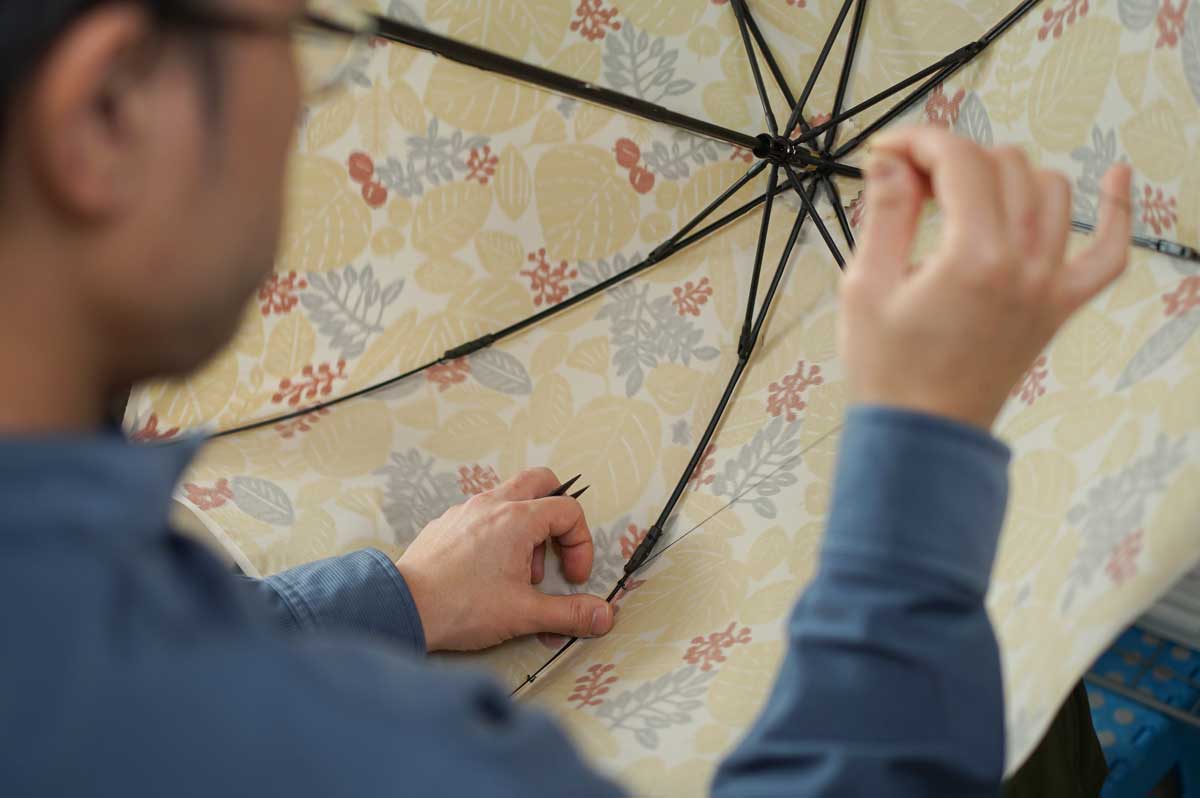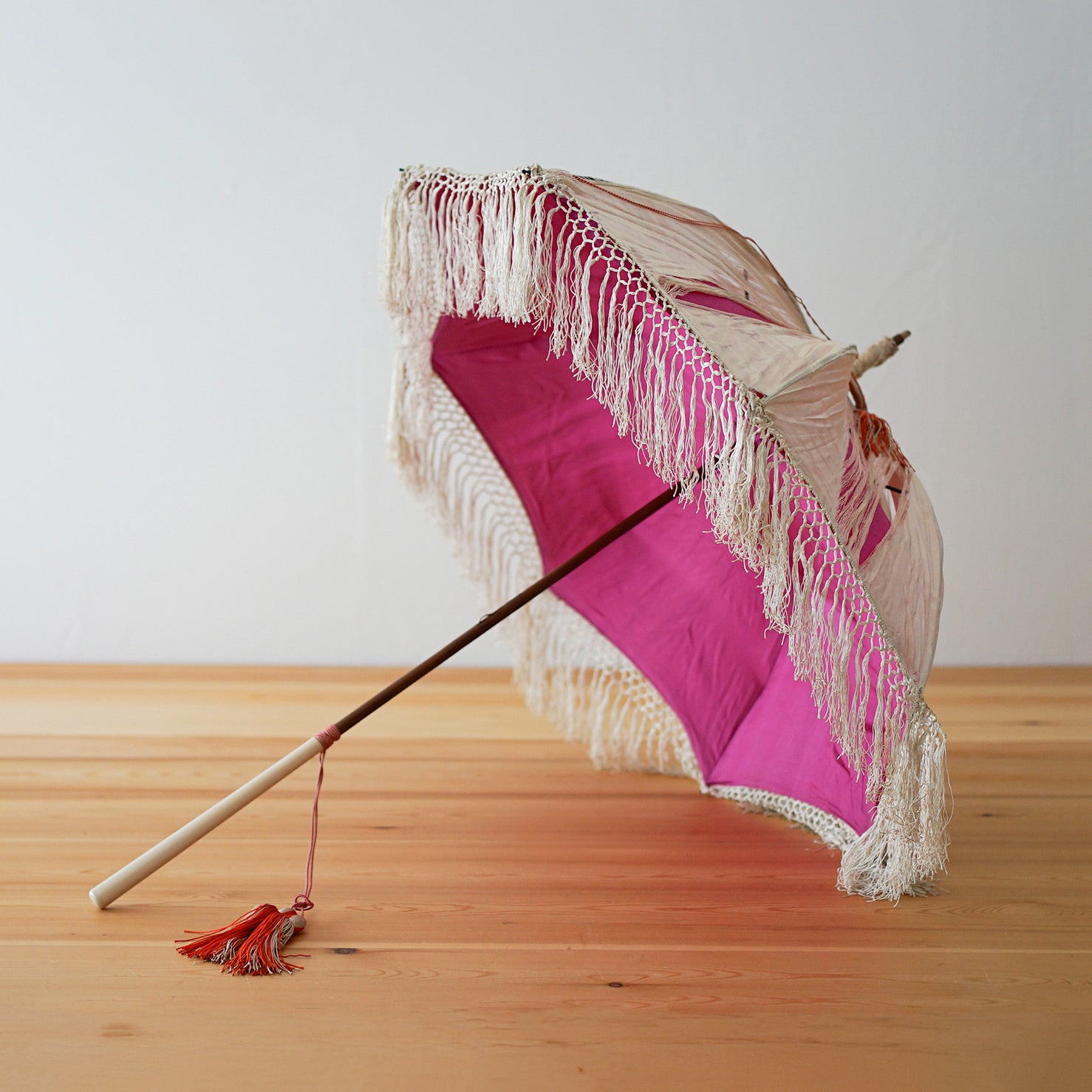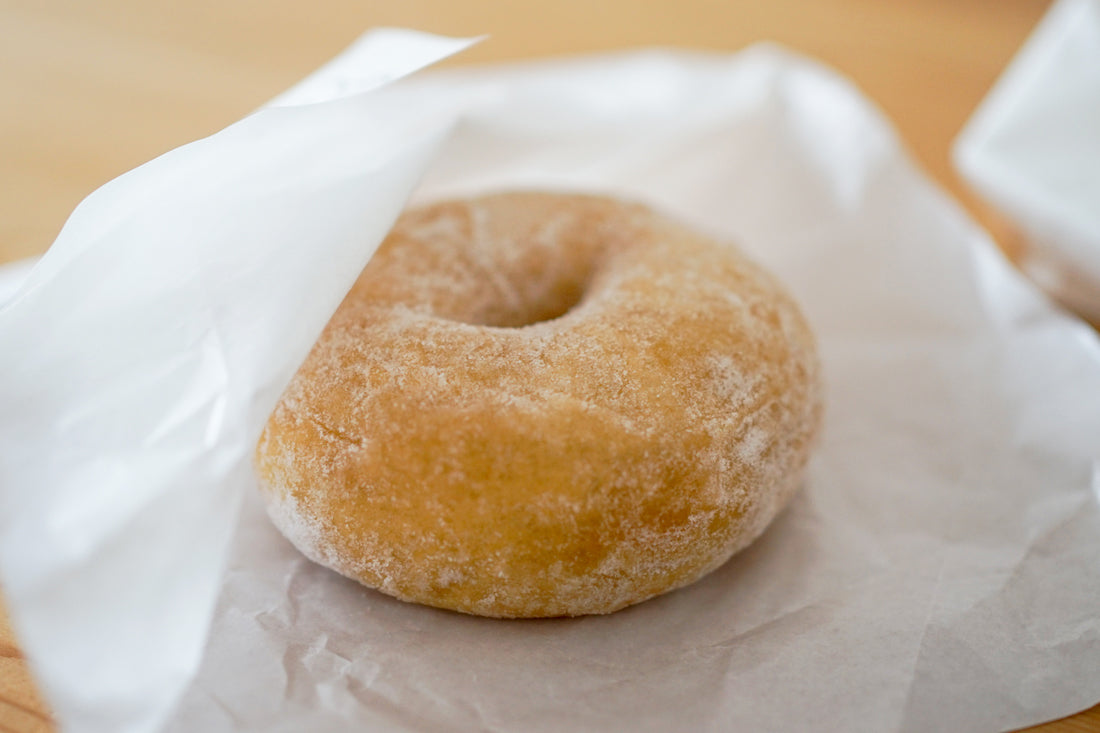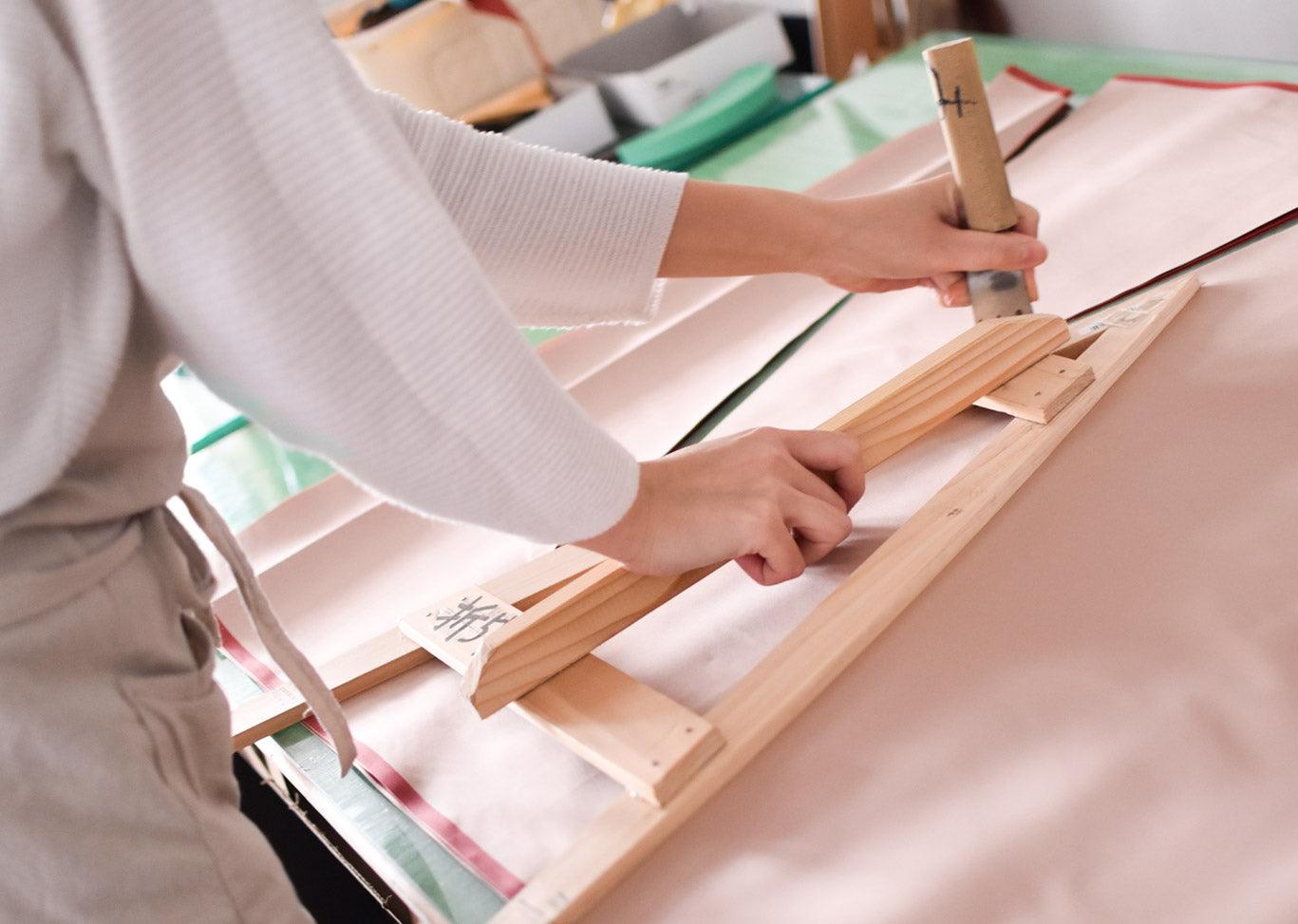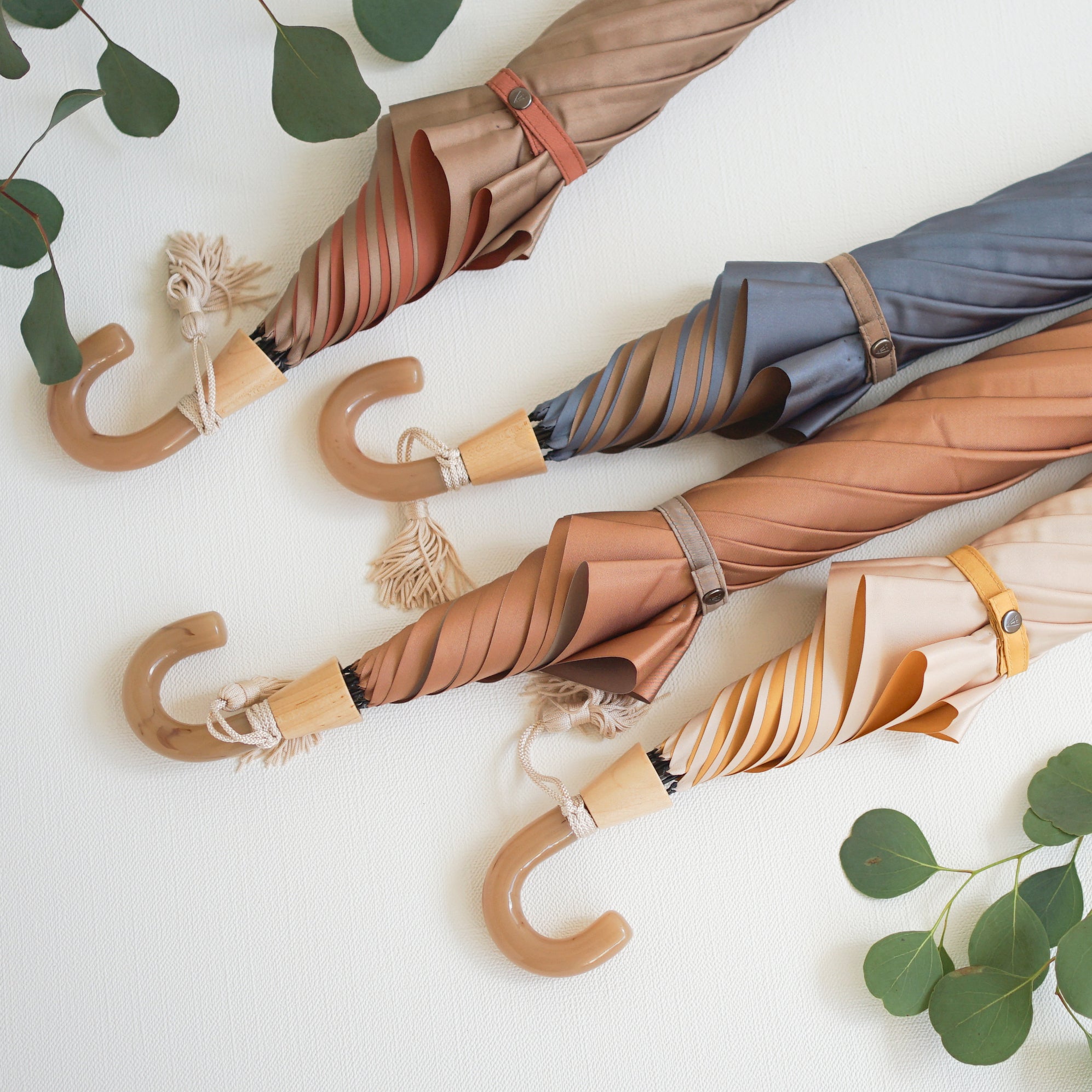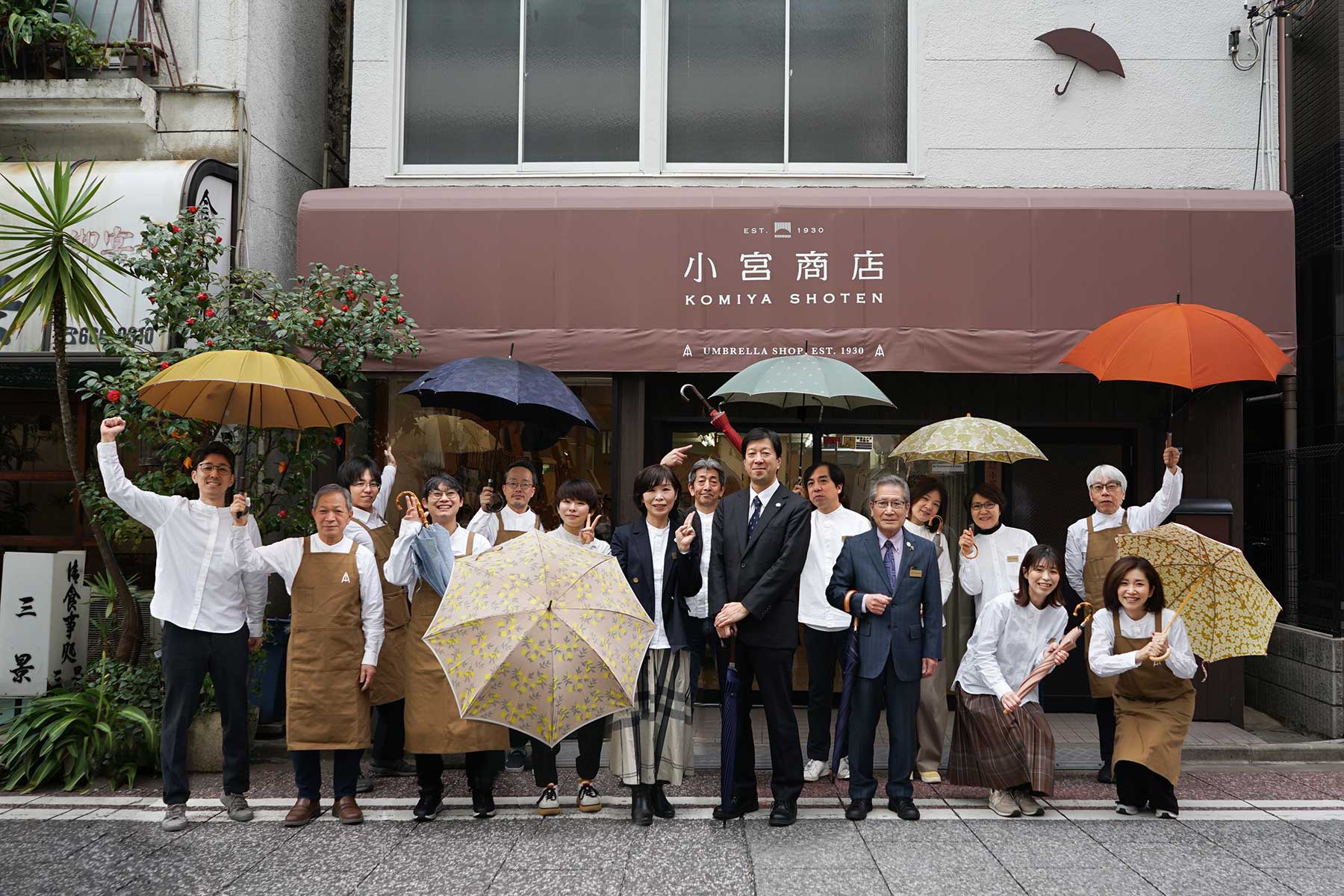Thanks to recent TV appearances and other factors, customers have become interested in umbrella making and umbrella makers, which makes us very happy.
By the way, the "umbrella fabric" of Koshu weaving is essential for making Komiya's umbrellas, including the representative "Kasane" series of Komiya Shoten. It is woven in Yamanashi Prefecture, a famous textile production area with a 400-year history, using the same process as in the past.
Among them, it may not be an exaggeration to say that Yamanashi Prefecture's Koshu weaving is the only fabric that uses the yarn-dyed technique specifically for Western - style umbrellas (where the threads are dyed before weaving) to weave narrow fabrics using two warp threads and one weft thread .
But did you know that Koshu weaving is made with an astonishing amount of division of labor ?
Before being woven on the loom , the threads are dyed by the dyer , then repeatedly wound onto bobbins by the rewinder , then the loosened warp threads are printed (to create patterns) by the attacher, and finally the finisher applies a water-repellent and water-resistant finish...they go through many processes and hands to make them.
Today, I would like to briefly introduce some photos from a recent visit our staff took to a workshop in Yamanashi.
(More details will be provided in the Umbrella Dictionary at a later date.)
① The yarn is dyed at the dyeing shop Mukaihara Dyeing before it is woven.
◆Beautiful thread. This state is called a "skein"↓

◆Dyeing is done using high-pressure steam.
The dye (disperse dye) that dyes the fabric comes out from these small holes.


② At the reeling shop, the skein is wound onto a bobbin, and then it is expanded again into 5,000 to 10,000 strands and rewound.


③Add the "Japanese flower pattern" to Komiya's umbrella.
An artisan uses a dye stencil made by a "stencil maker" to print on fabric that has been temporarily woven by the "temporary weaver" using two warp threads.
◆Can you see the temporary weaving thread?↓

When printing, the colors are dyed starting from darkest to lightest.
In other words, if there are nine colors, there are nine different patterns, and it is a very laborious process that requires nine repeated printing processes.




④ At the "loom shop". Weaving "Japanese flower patterns" on a shuttle loom. ↓

For more information about shuttle looms, please see the very helpful blog of the Yamanashi Prefectural Industrial Technology Center, which we visited along the way.
⑤ The rolls of cloth are treated to make them water-repellent and water-resistant by Nitta Seiri Co., Ltd.

In this way, the now rare Koshu weave, which is made exclusively for umbrellas, passes through the hands of many craftsmen before finally reaching the umbrella craftsmen at Komiya Shoten.
Koshu weave is used for Komiya umbrellas.
If you own a Komiya Koshu-ori umbrella, I would be delighted if you could think about the invisible story and artisans that went into making that umbrella.
With an umbrella filled with the warm feelings of so many people, rainy days are sure to be a little more enjoyable!
[Product:wabana5512][Product:wabana558]


